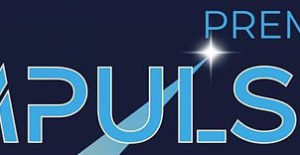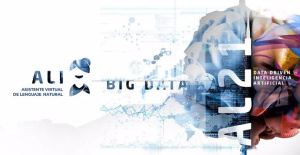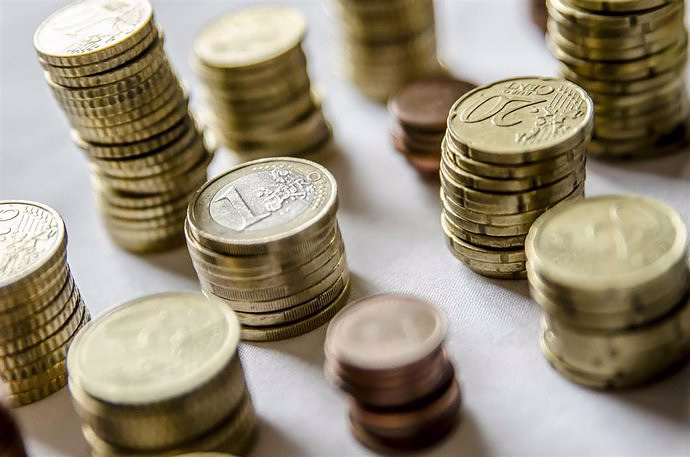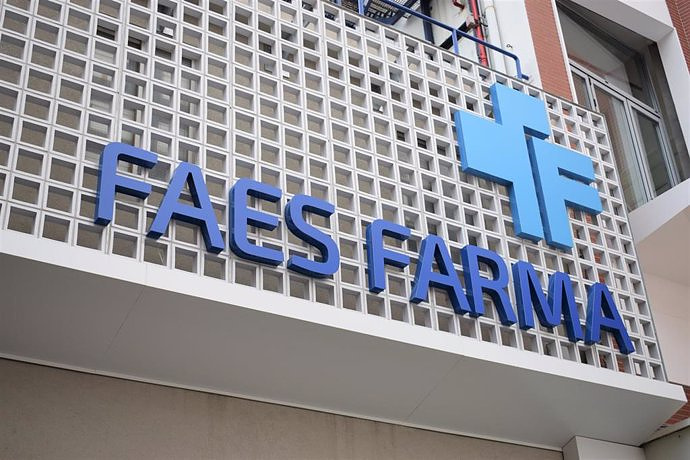Bitcoin: The origin of all the Blockchains? Even if it is gladly accepted: So that's not true. Bitcoin brought us the Blockchain technology to some notoriety. However, the first block chains there were already earlier.
The Blockchain technology came first, with the growing popularity of Bitcoin (of course, still expandable) prominence. However, the idea of a "chain" of TRANS-action blocks, the cryptographically secured and decentralized, is older than the mother of all crypto-currencies.
Blockchain-pioneers Stuart Haber and Scott Stornettain 1991, , the two researchers Stuart Haber and W. Scott Stornetta basic research to a cryptographically operated of concatenation of individual transaction blocks. That was 17 years before the publication of the Bitcoin White Paper by Satoshi Nakomoto. In her work "How to time-stamp a digital document", they dealt with the Problem of authorship in the age of digitalisation:
"The prospect of a world in which all Text, Audio, image and video documents in digital Form on easily modifiable media raises the question of how to confirm when a document was created or last modified. The Problem is that the data and not the Medium must be marked with a time stamp“
it is said in the Abstract of the work.
digital fingerprintIn their introduction, Haber and Stornetta make your approach to a solution by example:
"A recognized method for time stamping a scientific idea is the daily Create notes on their own work in a laboratory notebook. The dated entries are sequentially registered in the memo book, with no page remains blank. The sequentially numbered, sewn-in pages of the notebook make it difficult to manipulate the record without leaving telltale signs. The note will be stamped in book then regularly by a notary or by a Director verified and signed, increases the validity of the claim.“
this Already detects some of the properties of what later became known as the "Blockchain": The traceability of entries, the manipulation resistance and the increasing validity through a continuous Review of the book by an independent party.
each page of The lab journal to correspond to the blocks; the fact that they are sewn, as an analogy to the cryptographic grasp for Daisy-chaining of the blocks. The regular rubber stamp of the book by a third instance is in this respect comparable with the control and consensus mechanisms of the Blockchain, since every confirmation of a new page. at the same time the entire book.
absolute proof – D ie oldest Blockchain in the world?The two researchers brought to maturity in their Reflections on the Business and founded in the year 1993 with "Surety" one of the first companies that would, in a sense, earned the name "Blockchain" – and in the year 15 before Bitcoin. Surety provides "absolute proof" a digital time-stamping service, which makes the tracking of the creation and modification time of digital documents. The User can seal data on your computer to cryptographically"". This is a kind of digital fingerprint that is sent in the Form of a hash of the absolute proof-database and archived there. The saved in the database "fingerprints" form values in a chain of Hash, in which the Manipulation of an entry would inevitably lead to the invalidity of the entire chain and, therefore, practically not possible.
The New York Times and the BlockchainA special feature is the way that Surety makes the integrity of your database is publicly verifiable. By weekly publication of the current Hash value in the largest daily newspaper in the world – the New York Times.
In the data sheet for absolute proof, it is said:
Base64"The unique sealing process' of a Surety is to be fully monitored, so that it will not be possible for anyone, before ,to change sealed' content without detection. Once per week, Surety publishes an integrity value in the [...] the New York Times. The value represents the combined digital fingerprints of all electronic records, or objects that have been sealed by Surety since its origin,‘.”
This integrity value is in the Form of a Base64 hash and is therefore a public Bitcoin address (which is based on Base58) is not dissimilar. Also the aspect of public Accountability has in common the Surety Protocol with the "right" block chains à la Bitcoin. Nevertheless, the company will not succeed without a Central Server. This did not stop some however, of them, to designate Surety as the longest Blockchain in the world.
The longest running blockchain started in 1995 and is still running strong today. Current hash circled in red. Based on Stuart Haber and W. Scott Stornetta https://t.co/q1VIUvwGUA pic.twitter.com/eGEhqFSl7U
— Ittai Abraham (@ittaia) August 23, 2018
Haber and Stornetta have pulled back in the Blockchain research. The stone, with its basic research into the roles, however, remained in motion. Thereafter, Nick Szabo should come up with his design to Bits of Gold. But that is a different story.

 Exploring Cardano: Inner Workings and Advantages of this Cryptocurrency
Exploring Cardano: Inner Workings and Advantages of this Cryptocurrency Seville.- Economy.- Innova.- STSA inaugurates its new painting and sealing hangar in San Pablo, for 18 million
Seville.- Economy.- Innova.- STSA inaugurates its new painting and sealing hangar in San Pablo, for 18 million Innova.- More than 300 volunteers join the Andalucía Compromiso Digital network in one month to facilitate access to ICT
Innova.- More than 300 volunteers join the Andalucía Compromiso Digital network in one month to facilitate access to ICT Innova.-AMP.- Ayesa acquires 51% of Sadiel, which will create new technological engineering products and expand markets
Innova.-AMP.- Ayesa acquires 51% of Sadiel, which will create new technological engineering products and expand markets The PSOE is holding a Federal Committee this Saturday that will serve to close ranks with Sánchez so that he does not resign
The PSOE is holding a Federal Committee this Saturday that will serve to close ranks with Sánchez so that he does not resign The Ibex 35 closes the week at its highest since 2015 and is already looking at 11,200
The Ibex 35 closes the week at its highest since 2015 and is already looking at 11,200 RELEASE: Dogfy Diet leads in canine nutrition with revolutionary natural solutions
RELEASE: Dogfy Diet leads in canine nutrition with revolutionary natural solutions STATEMENT: Fernando Belasteguín Curarti ambassador in China
STATEMENT: Fernando Belasteguín Curarti ambassador in China How Blockchain in being used to shape the future
How Blockchain in being used to shape the future Not just BTC and ETH: Here Are Some More Interesting Coins Worth Focusing on
Not just BTC and ETH: Here Are Some More Interesting Coins Worth Focusing on UPV students build a prototype of a wooden house to move to Equatorial Guinea
UPV students build a prototype of a wooden house to move to Equatorial Guinea The UA opens the call for the Impulso 2024 Awards for the best innovative business initiatives
The UA opens the call for the Impulso 2024 Awards for the best innovative business initiatives ALI, virtual assistant from Alicante, internationally recognized by the OECD
ALI, virtual assistant from Alicante, internationally recognized by the OECD Retrópolis brings the golden age of video games and computing to the UPV
Retrópolis brings the golden age of video games and computing to the UPV A million people demonstrate in France against Macron's pension reform
A million people demonstrate in France against Macron's pension reform Russia launches several missiles against "critical infrastructure" in the city of Zaporizhia
Russia launches several missiles against "critical infrastructure" in the city of Zaporizhia A "procession" remembers the dead of the Calabria shipwreck as bodies continue to wash up on the shore
A "procession" remembers the dead of the Calabria shipwreck as bodies continue to wash up on the shore Prison sentences handed down for three prominent Hong Kong pro-democracy activists
Prison sentences handed down for three prominent Hong Kong pro-democracy activists ETH continues to leave trading platforms, Ethereum balance on exchanges lowest in 3 years
ETH continues to leave trading platforms, Ethereum balance on exchanges lowest in 3 years Investors invest $450 million in Consensys, Ethereum incubator now valued at $7 billion
Investors invest $450 million in Consensys, Ethereum incubator now valued at $7 billion Alchemy Integrates Ethereum L2 Product Starknet to Enhance Web3 Scalability at a Price 100x Lower Than L1 Fees
Alchemy Integrates Ethereum L2 Product Starknet to Enhance Web3 Scalability at a Price 100x Lower Than L1 Fees Mining Report: Bitcoin's Electricity Consumption Declines by 25% in Q1 2022
Mining Report: Bitcoin's Electricity Consumption Declines by 25% in Q1 2022 Oil-to-Bitcoin Mining Firm Crusoe Energy Systems Raised $505 Million
Oil-to-Bitcoin Mining Firm Crusoe Energy Systems Raised $505 Million Microbt reveals the latest Bitcoin mining rigs -- Machines produce up to 126 TH/s with custom 5nm chip design
Microbt reveals the latest Bitcoin mining rigs -- Machines produce up to 126 TH/s with custom 5nm chip design Bitcoin's Mining Difficulty Hits a Lifetime High, With More Than 90% of BTC Supply Issued
Bitcoin's Mining Difficulty Hits a Lifetime High, With More Than 90% of BTC Supply Issued The Biggest Movers are Near, EOS, and RUNE during Friday's Selloff
The Biggest Movers are Near, EOS, and RUNE during Friday's Selloff Global Markets Spooked by a Hawkish Fed and Covid, Stocks and Crypto Gain After Musk Buys Twitter
Global Markets Spooked by a Hawkish Fed and Covid, Stocks and Crypto Gain After Musk Buys Twitter Bitso to offset carbon emissions from the Trading Platform's ERC20, ETH, and BTC Transactions
Bitso to offset carbon emissions from the Trading Platform's ERC20, ETH, and BTC Transactions Draftkings Announces 2022 College Hoops NFT Selection for March Madness
Draftkings Announces 2022 College Hoops NFT Selection for March Madness






















